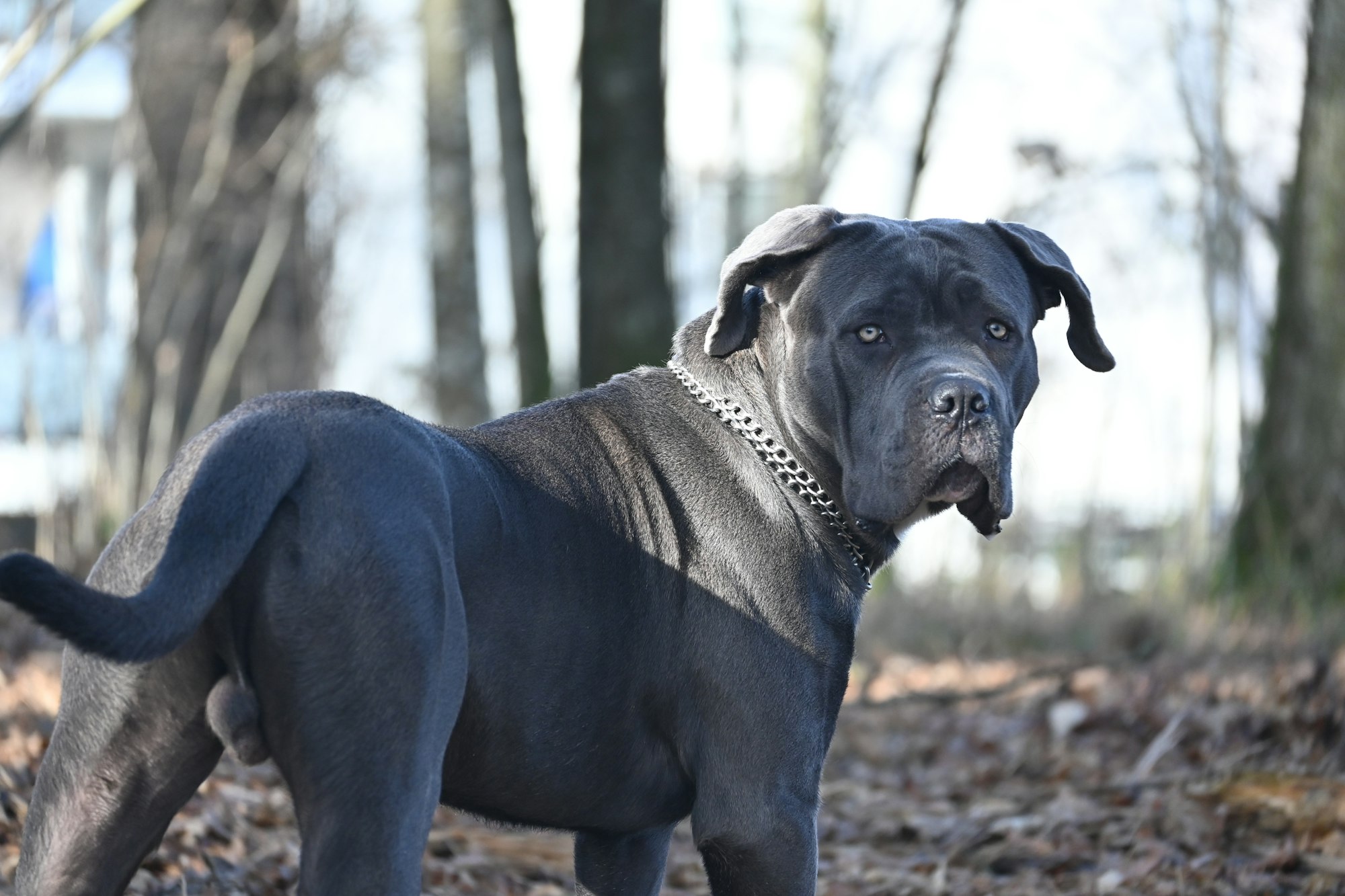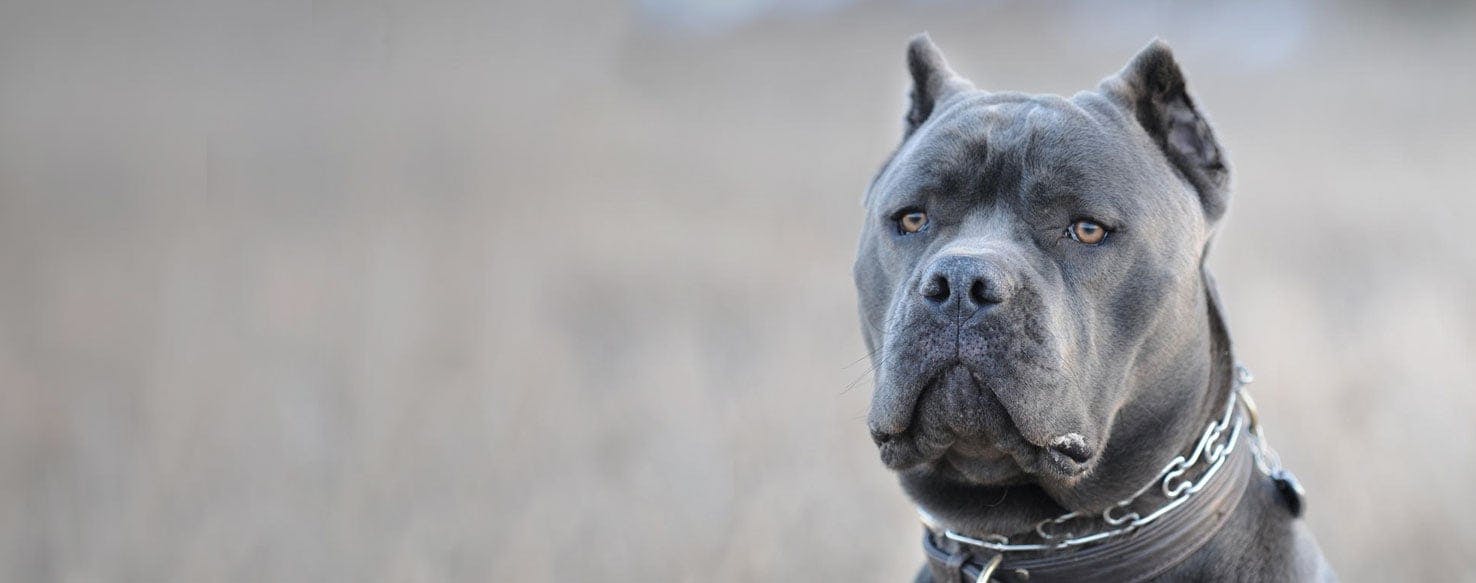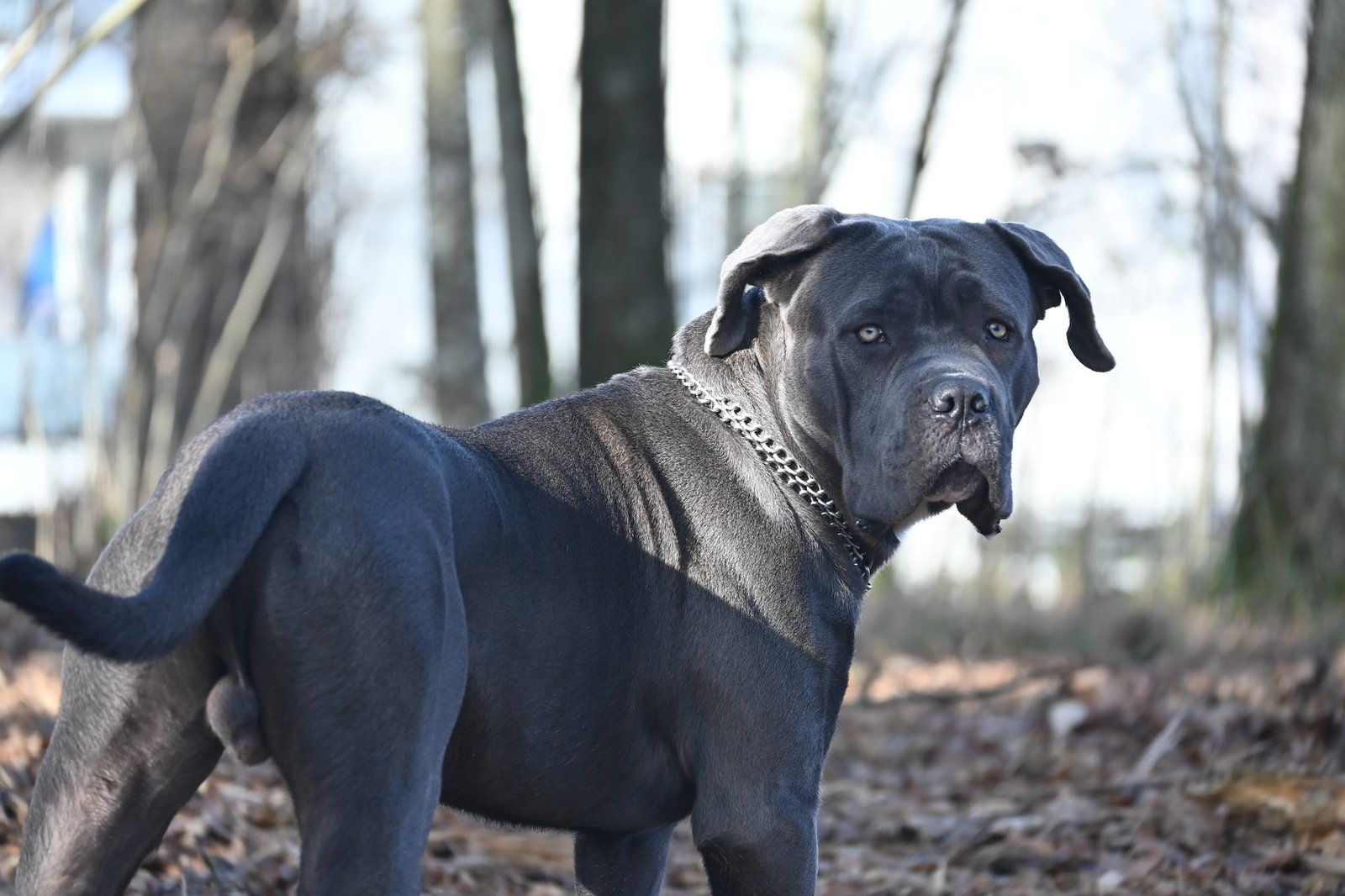In the world of cane corsos, the idea of a blue coat may seem like a rare anomaly. But did you know that blue cane corsos do exist? Yes, it’s true! While not as common as their more traditional black or fawn counterparts, blue cane corsos have a unique and captivating appearance that has gained attention from dog enthusiasts all over the world.
The cane corso breed has a rich and fascinating history. Originating in Italy, these dogs were used as working dogs, originally bred to perform tasks such as guarding livestock and hunting. Over time, they have become increasingly popular as companion animals due to their loyal and protective nature. When it comes to their coat color, cane corsos can come in various shades, including black, fawn, and even blue. However, it’s worth noting that blue cane corsos may be prone to a higher incidence of certain health issues, such as skin allergies. Responsible breeding practices and regular veterinary care can help mitigate these concerns and ensure the overall health and well-being of these magnificent dogs.
The Cane Corso dog breed can come in a blue coat color. Blue is a rare and unique color variation in Cane Corsos. However, it’s important to note that blue Cane Corsos are not recognized by the breed standard and should not be bred solely for their coat color. Health, temperament, and conformation should always be the top priorities when breeding and selecting a Cane Corso. If you’re interested in a blue Cane Corso, ensure that you are getting a well-bred and healthy dog from a reputable breeder.

Can Cane Corso Be Blue?
A common question among dog enthusiasts is whether a Cane Corso can come in a blue color. The Cane Corso is a large and powerful Italian breed known for its loyalty and protective nature. In this article, we will explore the possibility of Cane Corsos having a blue coat and provide detailed information on this topic.
What Is the Blue Coat Color?
The blue coat color in dogs is not as common as other colors like black, fawn, or brindle. Blue dogs have a diluted black coat color that appears blue-grey or slate. This color variation is caused by a specific gene called the dilution gene. When present in a dog’s genetic makeup, it affects the distribution of pigment in the coat, resulting in a blue hue.
While blue is not as prevalent in the Cane Corso breed, it is possible for them to have a blue coat. However, it is important to note that not all blue Corsos are natural. Some breeders intentionally breed for this color variation, while others may result from natural genetic variation. It is crucial to distinguish between naturally occurring blue dogs and those that are the result of intentional breeding practices.
Naturally Occurring Blue Cane Corsos
In some cases, Cane Corsos may naturally have a blue coat due to genetic variation. These dogs may not conform to the breed standard coloration but are still Cane Corsos in terms of temperament, conformation, and ability. Natural blue Corsos are recognized by various kennel clubs and can participate in events and competitions.
It is crucial to ensure that natural blue Cane Corsos come from trustworthy breeders who prioritize health, temperament, and overall breed standards. Responsible breeders carefully select breeding pairs to maintain the integrity of the breed while allowing for natural color variations.
Intentional Blue Cane Corsos
Some breeders selectively breed Cane Corsos to achieve the blue coat color. This involves pairing two dogs that carry the dilution gene to increase the likelihood of blue offspring. While intentional blue Corsos may be visually striking, it is essential to consider the potential health risks associated with breeding for specific coat colors.
Breeders who prioritize coat color over health and breed standards may unknowingly introduce genetic health issues into the line. It is crucial to work with reputable breeders who prioritize the overall health and well-being of the Cane Corso breed, rather than focusing solely on coat color.
Recognizing Responsible Breeding Practices
When considering acquiring a blue Cane Corso, it is important to ensure that the breeder follows responsible breeding practices. A reputable breeder prioritizes the health and well-being of their dogs, performs necessary health tests, and adheres to breed standards. They will be transparent about the potential health risks associated with breeding for certain coat colors and provide all necessary information.
It is recommended to visit the breeder’s facility, meet the parent dogs, and ask questions to gauge their knowledge and commitment to the breed. Responsible breeders should be open to discussing the potential risks and benefits of breeding for certain color variations. They will also provide proper documentation, including health clearances and registration papers.
Conclusion
In conclusion, Cane Corsos can indeed have a blue coat, although it is not as common as other coat colors. Some blue Corsos occur naturally due to genetic variation, while others are the result of intentional breeding. When considering a blue Cane Corso, it is crucial to work with responsible breeders who prioritize health, temperament, and overall breed standards. By doing so, you can ensure that you are acquiring a healthy and well-bred Cane Corso, regardless of their coat color.
Key Takeaways: Can Cane Corso Be Blue?
1. Some Cane Corsos can have a blue coat color, but it is considered rare.
2. The blue color in Cane Corsos is caused by a dilution gene called “d” that affects the black pigment.
3. Blue Cane Corsos are not recognized by major dog breed registries.
4. Blue Cane Corsos may have increased health issues, such as skin problems and allergies.
5. Responsible breeding practices and medical care are crucial for the well-being of blue Cane Corsos.
Frequently Asked Questions
Here are some common questions about the color of Cane Corso:
1. Are blue Cane Corsos a recognized color?
Yes, blue Cane Corsos are recognized by major kennel clubs. While black is the most common color, blue is an accepted color variant in the breed standard. The blue color is the result of a dilution gene that affects the black coat pigment, giving it a bluish-gray appearance. It’s important to note that blue Cane Corsos can vary in shade, ranging from a lighter gray to a deeper steel blue.
However, it’s worth mentioning that some kennel clubs and breeders have stricter standards when it comes to the acceptance of blue Cane Corsos in the show ring. This is because the dilution gene can also increase the risk of certain health issues, such as skin problems and coat thinning. Responsible breeders prioritize the overall health and well-being of the dogs, regardless of their color.
2. Can blue Cane Corsos be bred with other colors?
Yes, blue Cane Corsos can be bred with other colors. When bred with other Cane Corsos, they can produce offspring of various colors, including black, blue, brindle, and fawn. However, it’s essential to follow responsible breeding practices and consider the potential health risks associated with breeding blue Cane Corsos.
Breeders should prioritize the health, temperament, and conformation of the dogs to ensure the overall quality of the offspring. It’s important to work with a reputable breeder who conducts health screenings and genetic testing to minimize the risk of hereditary health issues.
3. Do blue Cane Corsos have any specific care requirements?
Blue Cane Corsos do not have any specific care requirements solely based on their coat color. They have similar care needs as other Cane Corsos, including regular exercise, a nutritious diet, grooming, and socialization. However, it’s important to pay attention to their skin and coat health due to the increased risk of certain issues associated with the dilution gene.
Regular grooming can help maintain a healthy coat and prevent skin problems. Additionally, it’s advisable to consult with a veterinarian if you notice any abnormalities, such as excessive hair loss or skin irritation.
4. Are blue Cane Corsos more prone to health issues?
Blue Cane Corsos may be more prone to certain health issues compared to other colors. The dilution gene associated with the blue coat color can potentially increase the risk of skin problems, such as allergies, dermatitis, and infections. Additionally, some blue Cane Corsos may have a thinner coat, making them more susceptible to extreme weather conditions.
It’s crucial for owners to provide proper care, including regular veterinary check-ups, a balanced diet, and a clean living environment. By addressing any health concerns promptly and following responsible breeding practices, the overall health and well-being of blue Cane Corsos can be maintained.
5. Are blue Cane Corsos suitable for families?
Yes, blue Cane Corsos can be suitable for families. Like Cane Corsos of other colors, they can be loyal, protective, and affectionate companions. However, it’s essential to consider their temperament, socialization, and training needs when bringing a Cane Corso, regardless of its color, into a family setting.
Cane Corsos require early and ongoing socialization to ensure they grow up to be well-rounded dogs. They also benefit from positive reinforcement-based training methods that focus on building a strong bond between the dog and the family. Proper training and socialization can help blue Cane Corsos thrive in a family environment.

In summary, yes, the Cane Corso can be blue. While the breed standard primarily recognizes colors like black, fawn, and grey, the blu Cane Corsos have gained popularity in recent years.
However, it’s important to note that the blue color in Cane Corsos is caused by a dilution gene and is considered a deviation from the standard. Breeders should be cautious to prioritize health and temperament over color when breeding blue Cane Corsos.
